In this edition of Sliced, the 3D Printing Industry news digest, we cover the latest business developments, partnerships, and acquisitions in the additive manufacturing sector.
Today’s edition features financial updates, a host of medical 3D printing advances, an open-source jewelry repository, additive manufactured art exhibits and single-seater race car upgrades.
Read on for the most recent updates from Xerox, Nano Dimension, CRP Technology, Prototek, Titomic, Velo3D, Fictiv, PyroGenesis, WASP, CASTOR, Core Technologie, AML3D, Xometry, Northrop Grumman, nScrypt, Renishaw, BCN3D, CEMEX, COBOD, Fortify, MyMiniFactory and more.
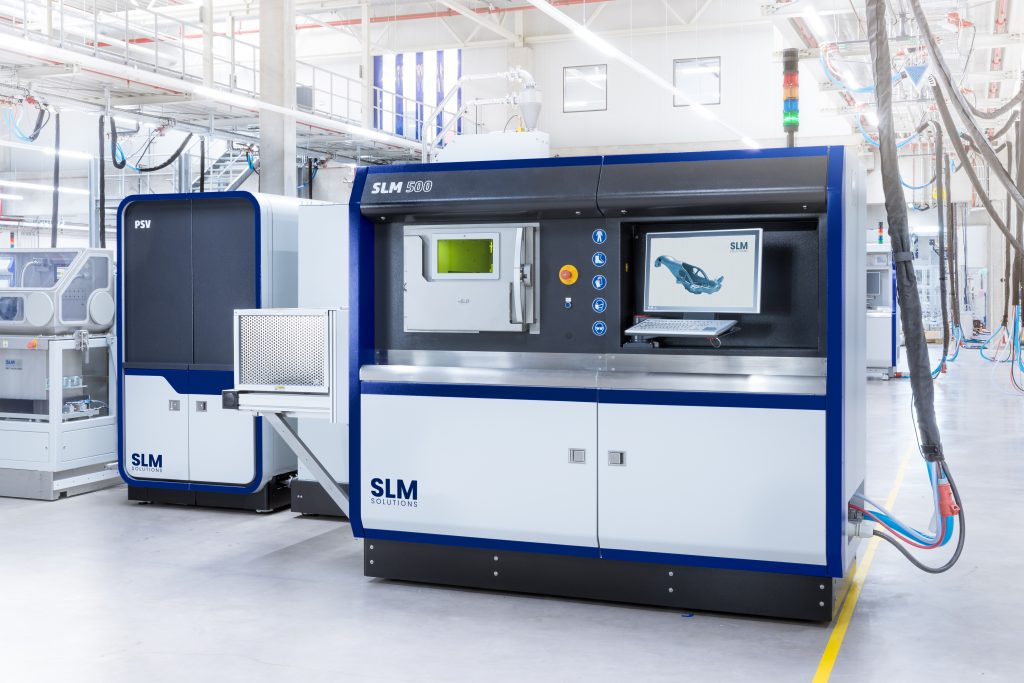
Bosch, PROENERGY, Deggendorf and more buy 3D printers
Starting this week’s update with Bosch, the German engineering and technology firm has announced the acquisition of two SLM 500 3D printers. Having installed the systems at its Nuremberg 3D-MPC Manufacturing and Processing Center, Bosch now expects to increase the throughput of the custom aluminium powertrain parts it produces there.
The Deggendorf Institute of Technology (DIT) has also placed an order for a new machine, in the shape of a Multiphoton Optics MPO 100 3D printer. Using the technology, developed by its parent firm Heidelberg Instruments Mikrotechnik, at its TC Teisnach Sensor Technology institute, the company plans to research packaging and integrated optics.
Energy service provider PROENERGY, meanwhile, has announced plans to make a $28.8 million investment in its advanced manufacturing capabilities. The first stage of this initiative has seen the firm buy an DMG MORI LASERTEC 125 system, which it intends to deploy to reduce the manufacturing and repair times associated with its LM6000 gas turbines as part of its aeroderivative power services offering.
“Independently fortifying our parts supply enables us to maintain our 120-day turnarounds for major overhauls, maintain world-class responsiveness and progress the greater goal of global energy security,” says Jeff Canon, CEO of PROENERGY. “More importantly, these are critical steps in supporting renewable power generation and moving the energy transition forward.”
On a more experimental level, injection molding tool manufacturer Westminster Tool has acquired a Mantle TrueShape 3D printer. Using the beta machine, which operates using a hybrid extrusion, CNC machining and sinter-based process, the business has already managed to manufacture mold cavities. The firm now plans to deploy the system to integrate conformal cooling into a production mold.
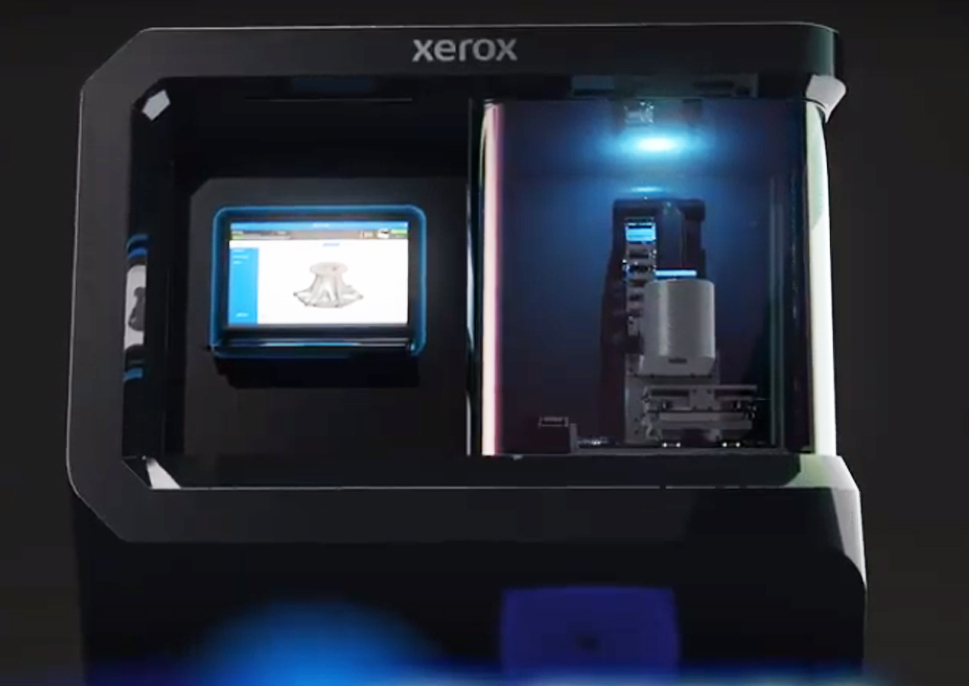
Xerox and Nano Dimension post Q2 numbers
On the financial front, US printer and photocopier manufacturer Xerox has revealed that its revenue declined to $1.75 bullion in Q2 2022. In its results, the company hasn’t reported directly on its 3D printing activities, but on its earnings call, CEO Steve Bandrowczak did pay lip service to the ElemX installed on the USS Essex, and the potential of Xerox’s growing portfolio to unlock future profitability gains.
“We continue to assess the optimum means of maximizing the value of each of our new businesses,” explained Bandrowczak. “This requires balancing the funding requirements of each new business with the needs of our printing services business, all while ensuring the adequate return of capital to shareholders and responsibly managing our capital structure.”
Elsewhere, electronics 3D printer manufacturer Nano Dimension has announced that it expects to have generated $11 million in Q2 2022, and $21.5 million over H1 2022. The preliminary figures, which represent a significant increase on the $811,000 and $1.6 million it reported in Q2 and H1 2021, reflect Nano Dimension’s 3D printing acquisitions over the last year, which have seen it acquire revenue.
The numbers also come just a week after Nano Dimension bought shares in Stratasys, in a move that was followed by Stratasys filing for a poison pill to prevent any future hostile takeovers. While Nano Dimension’s results demonstrate impressive growth, it has been keen to point out that the numbers are provisional, with its final earnings set to be confirmed via a call on September 1, 2022.
In the tabletop gaming market, Games Workshop has also announced annual growth in FY 2021/22, with its revenue rising 3.7% from £150.9 million to £156.5 million. That said, Edison Group analyst Russell Pointon told the armchair trader 3D printing is “improving all the time,” as such, it could soon challenge the firm’s dominance in miniature creation.
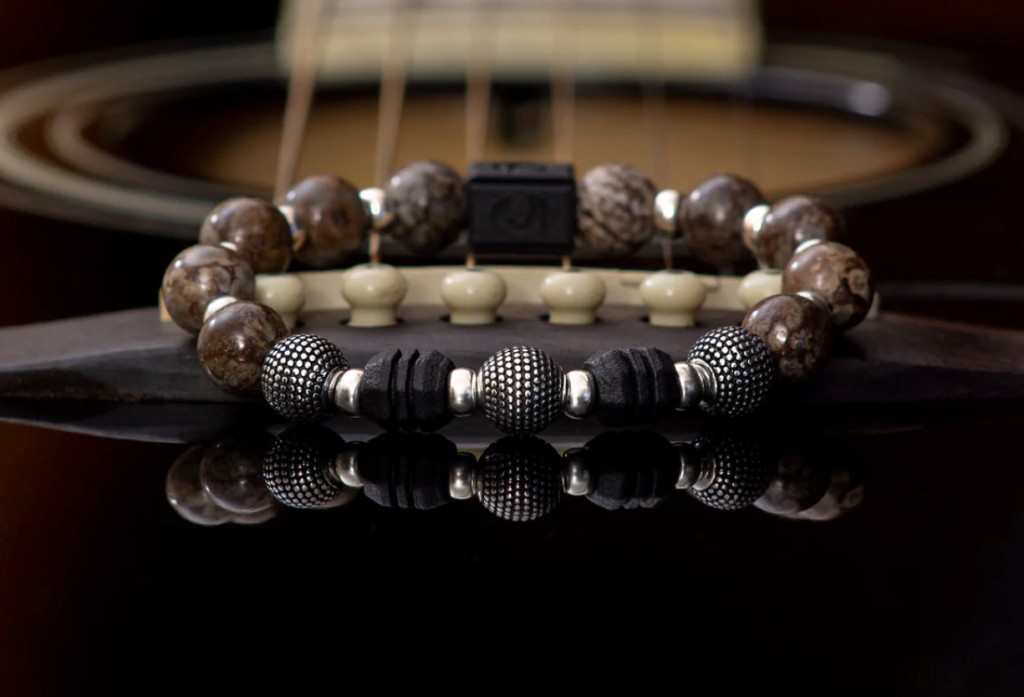
Jewelry businesses sparkle thanks to 3D printing
In the world of jewelry 3D printing, Eternha has chosen to adopt CRP Technology’s Windform GT Glassfiber composite, in the production of its Aquilha, Falcho, Lupho and Cobrha men’s bracelets. By Selective Laser Sintering (SLS) the wearables, the firm has been able to realize shapes varying from parallelepiped to a cylinder, as well as different graphic elaborations, including its logo.
“The SLS 3D printing process guarantees perfect control of the concept, with no risk of incurring ‘interpretations’ by the supplier during the manufacturing phase,” say the firm’s founders Stefano Massimiliano Marangoni and Chiara Cistriani. “This is very important, especially in the pre-production phase, when many features such as cutting and balancing must be considered. Moreover, ensuring total adherence of the final, customized bracelet to the one seen online, is essential.”
Engineer Adam Zeloof has also taken his passion for creating custom wearables to the next level, by launching his own open-source jewelry website. Designed to serve as a treasure trove for those seeking to get decked out in 3D printed bling, the OpenJewelry site not only features wearable art designs, but advice on the techniques, materials and processes readers can use to manufacture them.
Prototek, Fictiv, Titomic and Velo3D in business updates
In business news, on-demand manufacturing service provider Prototek has expanded its production capacity via the acquisition of the Prototype Solutions Group (PSG). The deal sees the firm become Prototek’s third location in Wisconsin, where it joins Midwest Prototyping, Prototek’s additive manufacturing division headquarters, and Prototek, Grafton, a sheet metal and machining operation.
Titomic Kinetic Fusion 3D printing developer Titomic has announced making a number of business advances. Over the last quarter, the company established joint ventures with Neos International and Repkon to develop tooling 3D printing production capabilities and the first defense-focused hybrid cold spray manufacturing facility, respectively.
In a packed update, Titomic also revealed that it has sold its first D523 3D printer to the Asia Pacific region, installed a Titomic TKF1000 at TWI UK, gained a service order from Fleet Space Technologies and completed factory acceptance testing prior to the shipment of its first commercially-ordered turnkey glass mold coating system.
3D printer manufacturer Velo3D, on the other hand, has unveiled a partnership with US government supplier the Hartech Group. As part of the companies’ collaboration, Hartech will now distribute Velo3D’s technology to government agencies, including the US Department of Defense, while working together to deliver full-service project execution in terms of sales, installations and onboarding.
Lastly, in this week’s business update, the on-demand manufacturing platform Fictiv has rolled out an update to its online platform that enables users to receive, review, and respond to injection molding design for manufacturability (DFM) feedback. The new offering is said to drastically streamline feedback loops and add much-need traceability and visibility to the DFM process for injection molding.

Advances made in bioelectronic and probing R&D
Researchers at the University of Sheffield have partnered with manufacturing adhesive developer Interonics to develop precion-3D printed bioelectronic sensors. Using the firm’s mixing and dispensing equipment, the team were able to improve the consistency of their mix, enabling them to achieve better definition and reduce nozzle blockages.
Following on from their initial success, the researchers now plan to fit these elastomeric sensors to a diagnostic glove capable of helping improve the way patients recover from injury and monitor neurological and musculoskeletal conditions.
In the UAE, meanwhile, a team at New York University Abu Dhabi has used 3D printing to develop novel Atomic Force Microscopy (AFM) probes in true three-dimensional shapes. Developed using a single-step two-photon polymerization (2PP) approach, these 3DTIPs reportedly allow scientists to observe, measure and manipulate samples at a micro and nanoscale with unprecedented precision.
Compared to their silicon-based counterparts, the devices are said to be softer, making them better-suited to applications involving gentle interactions with cells, proteins, and DNA molecules. Given that these probes’ material properties also make it possible to scan 100 times faster. It’s thought that they could enable the bioactivities of proteins, DNA and smaller molecules to be captured in real time.
The researchers findings can be found in their paper titled “3D Generation of Multipurpose Atomic Force Microscopy Tips,” which was written by Ayoub Glia, Muhammedin Deliorman and Mohammad A. Qasaimeh.

New material products, applications & capabilities unveiled
Material developer 3D4Makers has added a new polyether ether ketone (PEEK) filament to its portfolio. Based on the Arkema Kepstan PEKK 6000, an amorphous-grade with a slow crystallization rate and high flow, the material is said to possess enhanced Z-layer strength, UL94 V-0 flame retardancy and high temperature and chemical resistance.
Plasma atomization technology specialist PyroGenesis has announced that it has officially moved from the sample production of its 3D printing powders to full-commercial size batch production. According to its CEO P. Peter Pascali, the ability to produce titanium powder by the ton effectively puts the company “in a position where it can provide additional perspective on status and next steps.”
As such, PyroGenesis has also provided an update on its partnership with metallurgical solution provider Aubert & Duval. Signed initially in 2019, the deal provided Aubert & Duval with exclusive rights to Pyrogenesis’ NextGen titanium powders in Europe. This is now set to be broadened, with discussions underway for a full distribution agreement, covering planning, order planning and logistics.
At the University of Maine, researchers have also begun working with colleagues at Oak Ridge National Laboratory to develop a new range of sustainable composite construction materials. Having turned wood byproducts such as sawdust and construction debris into a ‘flour,’ before binding this into pellets, the team is now aiming to use it as a basis for a prototype weather and insect-proof housing unit.
Givenchy, WASP and more 3D print art exhibits
In one of several additive manufactured art exhibits unveiled this week, Italian 3D printer manufacturer WASP has introduced the first housing prototype to be built via its CRANE WASP system from raw Earth. Built with the Institute for Advanced Architecture of Catalonia, Barcelona, the structure is on display at the Triennale di Milano until December 11, 2022.
The HUB-Robeson Galleries are also showcasing a 3D printed art exhibition at the moment, courtesy of Penn State faculty José Pinto Duarte, Tom Lauerman, Shadi Nazarian and Rebecca Strzelec. Named ‘Over & Over Again,’ the exhibit is designed to highlight the artists’ commitment to working with innovative technologies, encountering new possibilities and reimagining objects. Those interested can check out the sculptures from July 22 to September 4, 2022 at the HUB Gallery.
French fashion house Givenchy, on the other hand, has unveiled a set of 3D printed sunglasses. Launched as part of the brand’s Spring/Summer 2023 collection, the ‘GIV CUT’ futuristic-looking eyewear has been built on a ‘sleek design ethos’ by Givenchy alongside manufacturing and distribution partner Thélios. As well as a thick black frame, the glasses feature two of the brand’s distinctive ‘G’ motifs and an extremely edgy look, making them a statement rather than subtle fashion item.
Elsewhere on the fashion front, Northern Ireland-born designer JW Anderson has used 3D printing in a slightly different way, to create a life-sized pigeon-shaped clutch bag. While the unique bag is now sadly said to be out of stock, the firm’s pre-fall and fall/winter collections are also stocked with items such as rubber band shirts and hula-hoop polos, for those seeking out their fix of eccentric fashion wear.
Hollywood CGI and practical effects specialist Weta Workshop has also released some behind the scenes footage that reveals how 3D printing was used to create Thor’s costume in Thor: Love and Thunder. While many of the scenes the suit featured in relied on CGI, the firm’s video reveals that at least one version was made for real, as well as the resin printing, latex pouring and sewing used to create it.
Sage, CASTOR, 4D_Additive launch software upgrades
3D printing software developer CASTOR has rolled out an update that enables users to automatically analyze 2D drawings, and identify parts suitable for additive manufacturing. In practice, the program uses computer vision and machine learning technologies to interpret the geometry of each part. Resulting data can then be used to establish the viability of 3D printing as well as optimization opportunities.
Core Technologie has also launched an update for its 4D_Additive 3D printing software that brings improved nesting functionality. Compared to previous iterations, version 1.4 SP0 is said to allow for higher part throughput, accuracy and packing density. In other areas, the new version enables FDM-specific process mapping, hatching and slicing, and the creation of FDM-optimized supports as well.
In the wider business world, software provider Sage has extended its Intacct financial program offering with the launch of Sage Intacct Manufacturing. Introduced as part of an Early Adopter initiative, the cloud-based solution extends Sage Intacct with features designed to help those working in manufacturing and distribution streamline their end-to-end operations and increase productivity.
Lastly in this week’s software update, TechMed 3D has announced the launch of a new technology. Available exclusively in a mobile format, the firm’s ‘SNAP’ app allows users to acquire 3D scanning data through its ‘plantar surface’ and ‘foam box’ modes. Not only do these pick up more data in a single scan, but resulting measurements can be submitted on the move, thus accelerating users’ workflows.
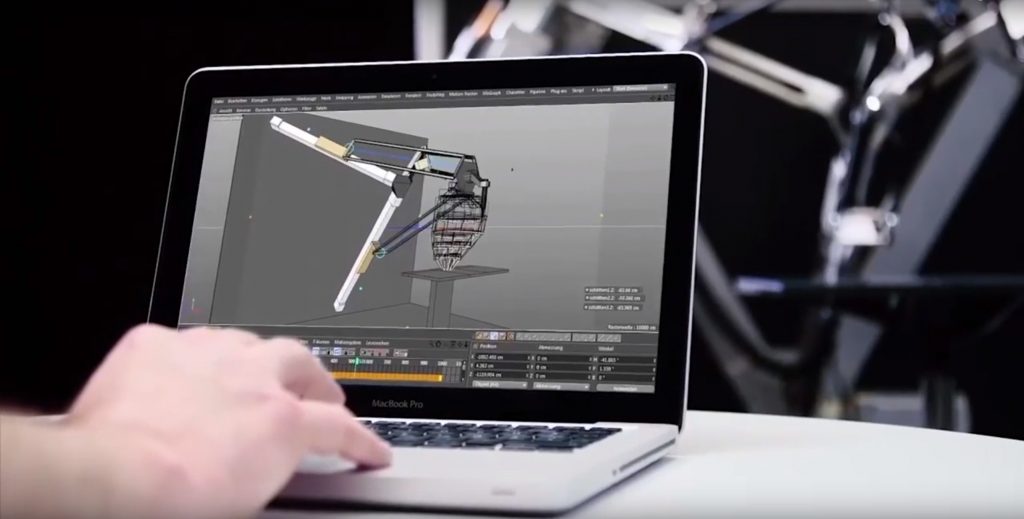
Dynamis PRC introduce 3D printed single-seater
In automotive news, the Politecnico di Milano-based Dynamis PRC race team have used 3D printing to create a prototype Formula SAE car. Built to compete in the annual university engineering design championship, this year’s edition features an engine cable support and flap ribs 3D printed from RadiciGroup’s Radilon Adline materials. The parts help keep cabling in place while the car attacks sharp turns.
“After a series of meetings concerning the young students’ needs for their new project, we thought of using one of the products in our Radilon Adline range,” explains Chiara Devasini, a Marketing & Development Project Leader at RadiciGroup. “These filaments are based on special polymer grades that have advanced technical characteristics, such as mechanical, chemical, and thermal resistance, and are suitable not only for prototyping but also for manufacturing functional components.”
AML3D, Northrop Grumman and Libherr in aerospace advances
Moving onto aerospace now, large-format 3D printer manufacturer AML3D has revealed that it’s working towards Aerospace Quality Management System AS9100D:2016 accreditation. Once implemented, the standard, which enables the manufacture of ‘fly parts’ for aircraft, will put AML3D at a competitive advantage when bidding for contracts, as it plans to become only the second firm of its kind to achieve it.
The company’s Wire Additive Manufacturing (WAM) technology has also been awarded DNV’s first Additive Manufacturing Facility accreditation. Certification tells customers that WAM-printed components meet DNV standards for oil, gas and marine applications in which they’re exposed to extreme load, pressure or corrosive environments. Gaining accreditation is now expected to boost AML3D’s business in these areas, especially in steel and nickel aluminum bronze part production.
US defense and aerospace firm Northrop Grumman, on the other hand, has provided a rare update on its 3D printing business. According to the company, it has now invested more than $70 million in the technology, and integrated over 5,000 3D printed parts into its aeronautical platforms, all produced by small-to-medium-sized suppliers and partners.
Over in France, Liebherr-Aerospace has also been awarded a contract to 3D print a lower cargo door actuator and valve for Airbus’ A350 wide-body airliner. Having delivered a printed proximity sensor bracket for the A350’s nose landing gear, the first Airbus-qualified titanium part, the company will now produce a far more complex. That said, the firm has already manufactured valves for Rolls-Royce’s Pearl 10X engine and Dassault Aviation’s Falcon 10X jet, standing it in good stead to fulfill the order.
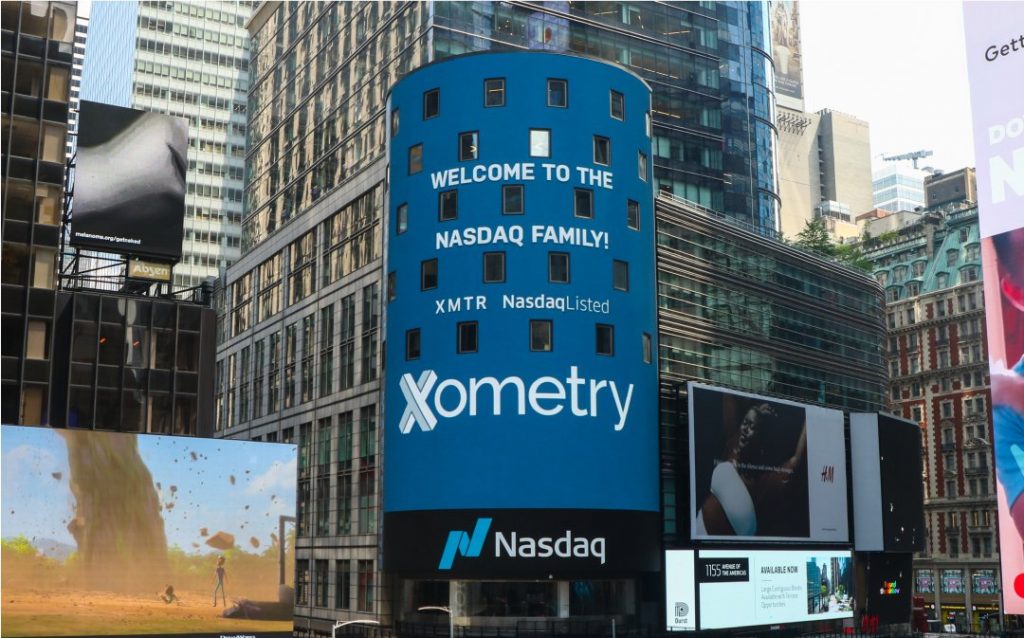
Xometry donates to empower the next generation
Manufacturing marketplace Xometry has donated $420,000 to the Florence-Darlington Technical College Educational Foundation, according to an SCNOW report. The donation, which represents one of the largest in the college’s history, is set to be used to help fund the tuition of 28 machine tool technology students and five mechanical engineering students, for the fall 2022 semester.
“Florence-Darlington Technical College can’t thank Xometry enough for this generous donation,” said the college’s President Jermaine Ford. “It’s so wonderful to have partners like Xometry, which is committed to developing the next generation of skilled labor. Our machine tool technology and mechanical engineering technology programs produce incredibly talented graduates who are eager to enter the workforce.”
Application news: bike sores and marine habitats
Kicking off this week’s application update with Elastic Interface, the performance cycling pad developer has reportedly launched the world’s first 3D printed chamois pad. Introduced at Eurobike 2022, the N3X features a breathable open lattice structure that can be modified for users’ comfort. Rather than being sold as standalone accessories, the pads are set to be sewn into the cycling shorts of leading brands.
In aquatic 3D printing developments, Dutch start-up Tanaruz Boats has launched a new 15-foot additively manufactured boat. Named the Tanaruz DSI, the firm’s latest craft is made from polypropylene flakes reclaimed from household waste like recycled food packaging, as well as a 30% blend of glass powder, to ensure that each layer bonds together. 3D printing the boat, which is priced at just €15,000, also allows users to tweak its color, size, shape, propulsion setup and other specifications.
“Traditional shipbuilding involves a lot of manual labor, especially for customized models,” explains Alex Shifman, the man credited with inventing the boat. “This drives up the price of recreational vessels and places them beyond the reach of most, except the lucky few. Tanaruz wants to make boating affordable for all, especially those who are looking for a modestly priced and sustainable product.”
In a similarly marine-focused project, researchers at the University of Alberta have begun using 3D printing to build artificial habitats that could help scientists understand how to help restore receding coral reefs. The team’s 3D scanning, printing, molding and casting method yields replica reefs that are designed to remain stable underwater, and allow for the lengthy observation of aquatic life in-action.
nScrypt gains electronics 3D printing patent
Florida-based microdispensing specialist nScrypt’s research arm, Sciperio, has successfully patented its Litz Line 3D printing technology. Essentially a wire made of individually insulated strands twisted or woven together, litz wires are often used in electronics to carry current at radio frequencies (RF). The newly-awarded patent covers the printing, laser cutting, milling, etching or masking of conductive tracts onto a substrate, such as a bare die, in a way that yields a litz line with increased conductivity.
“People who know RF applications will know this is a big deal. It’s one part of fully-functional printed electronics,” said Dr. Ken Church, CEO of nScrypt and Sciperio. “nScrypt’s 3D manufacturing systems can 3D print complex structures of electronic devices, mill the surface before printing the litz lines, print the litz lines and other conductive lines with great precision at a micro-scale.”
Renishaw, BCN3D and more drive medical manufacturing forwards
In the medical sphere, UK-based engineering firm Renishaw has helped replacement joint manufacturer Marle Group get its clinical 3D printing business off the ground. Having acquired medical 3D printing specialist 3D Medlab, the firm reached out to Renishaw for support in getting the technology set up. Since then, the company has started using RenAM 500 and RenAM 500Q Flex systems at its facility, and it continues to work with Renishaw on products, processes and validation techniques.
Biotechnology specialist ActivArmor has also expanded its partnership with US 3D printer manufacturer Fusion3. The company is a developer of 3D printed casts that can be customized to GPs’ instructions, such as ensuring the exposure of post-surgical hardware, or making them suitable for ultrasound scanning. While the firms have worked together since 2016, they’re now collaborating on a complete in-house, on-demand 3D fabrication offering for hospitals and orthopedic clinics.
Researchers from Western University and Michigan Technological University have managed to develop an open-source table that can be built using everyday hand tools and materials, and a desktop 3D printer. Used to help position patients during procedures, such tables can cost upwards of $250,000 but the team’s can be 3D printed for less than $4,000.
The researchers’ findings can be found in their paper titled “Open source surgical fracture table for digitally distributed manufacturing,” which was written by J. K. Bow, N. Gallup, S. A. Sadat and J. M. Pearce.
Scientists in China, meanwhile, have come up with vascular grafts that feature polymeric elements which can be tuned to achieve a desired porosity, mechanical strength and rate of degradation. Leveraging their novel implant, the team have been able to regenerate a small-caliber artery, thus in future, they believe it could be a “promising tool” in clinical “vessel replacement” applications.
More on the researchers’ paper can be found via their research titled “Recombinant DTβ4-inspired porous 3D vascular graft enhanced antithrombogenicity and recruited circulating CD93+/CD34+ cells for endothelialization.” The paper was written by Wei Wei Xiao, Wanli Chen, Yinggang Wang, Cun Zhang, Xinchi Zhang, Siqian Zhang, Wei Wu.
Industrial designer Nicole Hone has partnered with Victoria University of Wellington’s Ross Stevens to 3D print experimental plant-like objects. Inspired by the vascular systems of real plantlife, these procedurally-modeled and Stratasys J850-printed ‘Polyphytes’ feature closed voids that are initially filled with PolyJet cleanser, before being drained out. Doing so allows the channels to become free-flowing, and enables the production of models which recreate the beauty of natural processes like pollination.
Finishing off this week’s medical update with BCN3D, the Spanish 3D printer manufacturer has worked with staff at SJD Barcelona Children’s Hospital to help facilitate the removal of a malignant tumor in an 11-year-old boy. Using three-dimensional anatomical models of parts of the patient’s skull, Dr. Josep Rubio was able to plan and simulate the operation before carrying it out. With the tumor, which was lodged in the patients’ cheekbone, having been removed, they’ve since gone on to recover.
“3D printing helped us avoid potential postoperative complications and improved the quality for both the patient and the surgical process,” adds Dr Adaia Valls, a maxillofacial surgeon at SJD Barcelona Children’s Hospital. “After weeks of surgical planning, we were able to perform a complete resection of the lesion and also preserve the patient’s vision.”
Fresh commercial and US government funding drives announced
In one of several recent additive manufacturing funding initiatives, building material specialist CEMEX’s investment arm CEMEX Ventures has invested in construction 3D printing firm COBOD. Having co-developed an admixture-boosted 3D printing concrete last year, the deal is expected to see the companies continue working closely together, in the development of technologies that meet construction needs.
Scottish 3D printing service provider Angus 3D Solutions Limited has announced an investment of a different kind, in that it has plowed £165,000 into an expansion. The cash is set to be spent on new gear, additional staff and a larger premises at Brechin’s Montrose Road Industrial Estate, that’ll increase its manufacturing space by 250%.
In US government-backed funding programs, the National Institute of Standards and Technology (NIST) has awarded $3.7 million to help address current and future barriers to the wider adoption of metal 3D printing. Thanks to the grant, research will now be carried out into measurement science to support equivalence and model-based qualification, as well as material characterization and standards.
As part of another initiative, the US Department of Energy (DoE) has awarded $3 Million to polySpectra and Fortify to advance R&D of 3D printed tooling. While the DoE has issued a total of $57.9 million to 30 projects, the companies’ research will focus specifically on the creation of durable direct additive tooling for automotive lightweighting from cyclic resins, in a way that undercuts CNC-machined alternatives.
MyMiniFactory says ‘F the Metaverse’
Leading London-based 3D file marketplace MyMiniFactory has announced plans to lead a ‘MetaReverse’ via a recent blog post. Criticizing the Metaverse and virtual reality (VR) in general for their potential to limit users’ human interaction, the company is calling for “reconnection, reconstruction, and relation.”
One way the company seeks to do so is by connecting designers with makers, who can buy designs and 3D print them, turning them into objects they can put together, play with, paint and modify. MyMiniFactory is also home to something else it terms a ‘MetaReverse: Scan the World, an ecosystem of free-to-download artifacts that has now accumulated a database of over 20,000 STL files.
“These are just MyMiniFactory’s contributions to building MetaReverses,” reads the post. “They’re our ways of using digital means to facilitate humans sharing in the joy of physical interaction. But there’s not one solution. We’re enabling a decentralized ecosystem, to try to put as much freedom in our creators’ hands as possible.”
To stay up to date with the latest 3D printing news, don’t forget to subscribe to the 3D Printing Industry newsletter or follow us on Twitter or liking our page on Facebook.
For a deeper dive into additive manufacturing, you can now subscribe to our Youtube channel, featuring discussion, debriefs, and shots of 3D printing in-action.
Are you looking for a job in the additive manufacturing industry? Visit 3D Printing Jobs for a selection of roles in the industry.
Featured image shows the Sliced logo on one of Nicole Hones’ 3D printed ‘Polyphytes.’ Photo via Nichole Hones.



